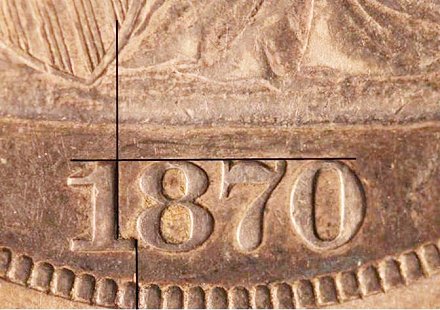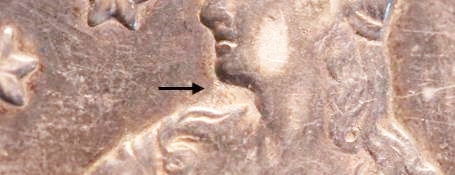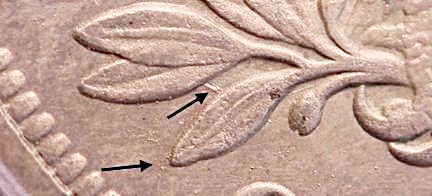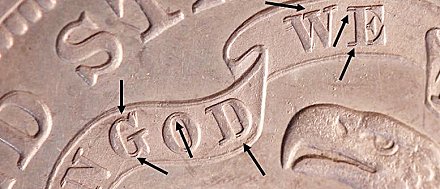|
|
Comments: This is the only use of Obverse 1 and the second of ten uses of Reverse A. |
Obverse 1 The photo below shows the Obverse 1 attribution grid.  1870 Obverse 1 attribution grid This die is almost completely unfinished under the chin, with numerous lines and lumps in the unfinished area, as shown in the following photo.  1870 Obverse 1 unfinished under chin
|
Reverse A displays a very strong die line, joining the lower two leaves. Also note the die rust around the end of the lower leaf.  1870 Reverse A die line The Reverse A die is strongly doubled. This will be notable on high grades, but may not be detectable on grades below VF/XF.  1870 Reverse A die doubling
|
| Photo credits:
Obverse 1: 1870 ANACS XF45, from the Osburn-Cushing reference collection. Reverse A: 1870 PCGS PR61 (mis-attributed as a proof by PCGS), from the Osburn-Cushing reference collection. |
